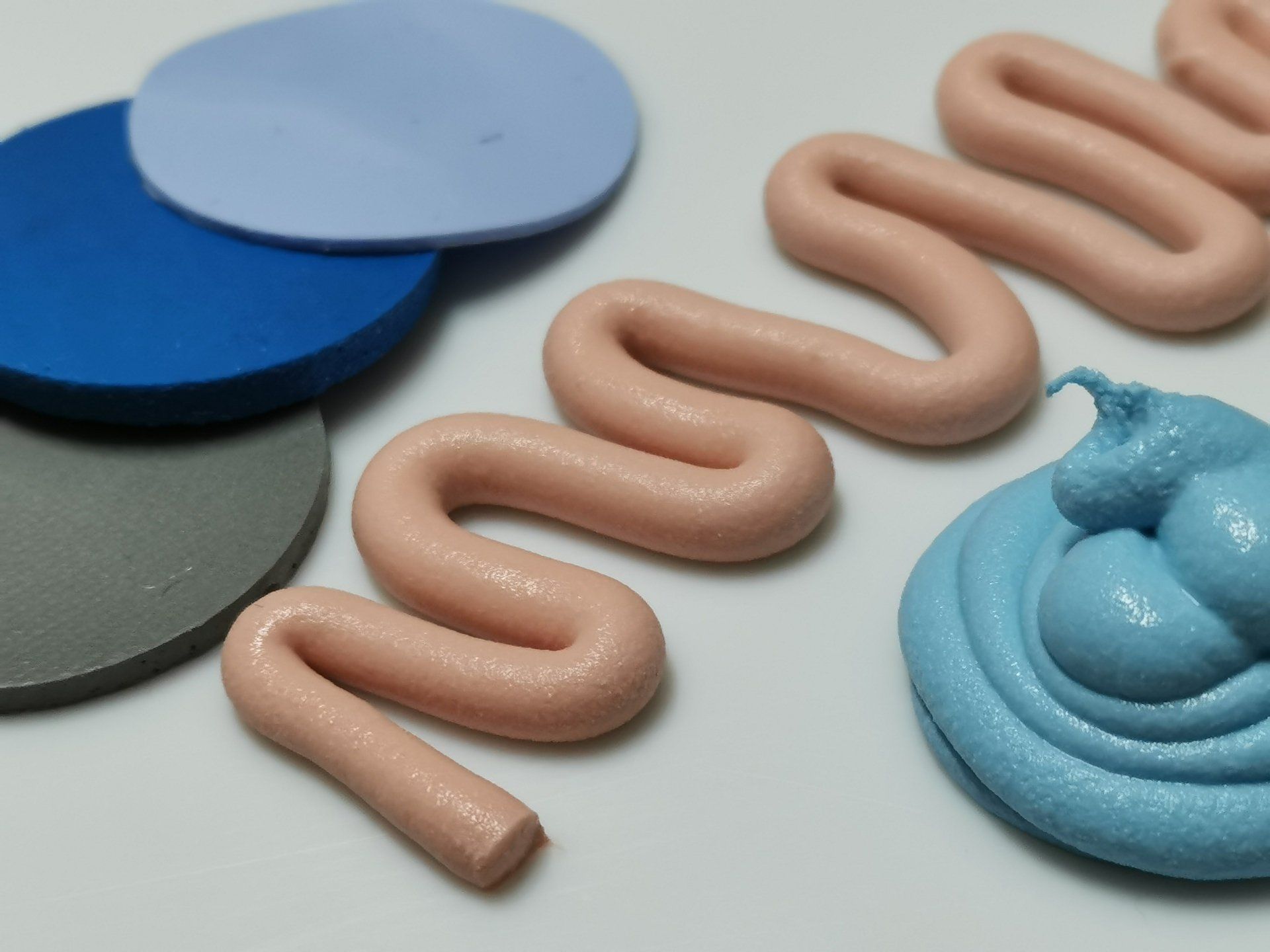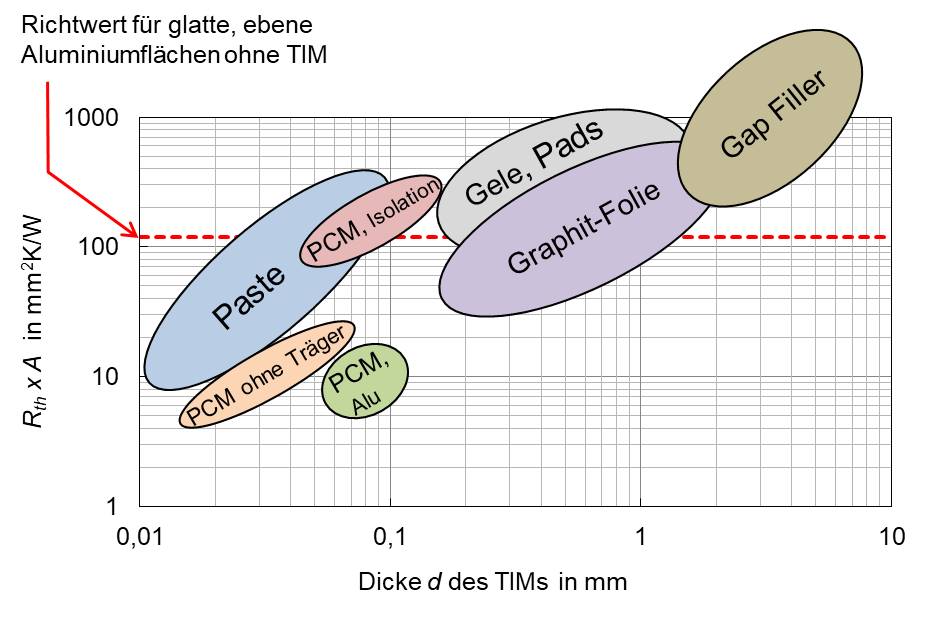Thermal interface materials (TIMs)
A thermal interface material (TIM) is used in areas with high thermal loads in order to optimize the heat dissipation between two solid bodies. The TIM displaces the air trapped in the cavities between these bodies and lowers the temperature of the solid body to be cooled by dissipating the heat loss. On the one hand, this prevents thermal failures. On the other hand, the life of the body is extended if it is a power electronic component.
A temperature that is 10 K higher halves the service life of a chip. Thermal interface material reliably reduces heat loss if used correctly and if the thermal situation is correctly assessed.
The selection of the TIM plays a decisive role in the thermal design of electronics. Ideally, the TIM can be completely dispensed with. There are manufacturing tolerances in every manufacturing process; there is a deviation from the construction. In addition, there are deviations in shape such as roughness, waviness, concave and convex deformations as well as scratches, burrs and dirt that arise, for example, during assembly.
Air is a poor conductor of heat. At 80 ° C, its thermal conductivity is only 0.03 W / (mK). Therefore, even with the smallest layer thickness in the range of 1 µm, a critical and above all uncontrollable thermal resistance occurs. In the statistical tolerance calculation, the geometric errors of the individual parts add up to a lower and an upper limit value. This results in variations in the thermal contact resistance, which are decisive for the quality and service life of the electronics.
The aim must be to make this contact resistance controllable and reproducible. The statistical tolerance calculation provides the gap dimension requirements for the TIM. From the thermal requirements for the semiconductor temperature, we get the specification for the maximum thermal resistance in the heat path. This is determined, for example, with the help of thermal simulation calculations. Further selection parameters are the electrical insulation properties and the installation conditions. For assembly purposes, the TIM is divided into two classes: preformed and dispensable materials. Preformed TIMs are hard and soft pads, phase change material (PCM), gap pads or graphite foils. These can be designed with an adhered or adhesive coating. This coating inevitably increases the thermal resistance compared to the non-coated variant. The dispensable TIMs include pastes, gap fillers, gels and adhesives.
As experts in thermal interface materials (TIMs), we would be glad to advise you on the selection and use of materials.
The following questions can be asked against the background of a material for thermal cooling:
- What type of TIM do I use? Paste, gap filler, gel, foil, etc.?
- What is the meaning of the "effective thermal conductivity" concerning TIMs?
- Why is the specification of the thermal conductivity of TIMs in the data sheets popular with the purchasing departments of the companies, but not very meaningful for the specialist?
- How do I test the service life of the TIMs correctly or how can I reproduce my specific application?
- What can I measure concerning TIMs and which measurement methods are suitable for which TIMs?
- Is it designed for BOL or EOL? Where do I get the EOL properties from?
- Which particles (material, geometry, size distribution, surfaces) do I need with which degree of filling in my matrix for maximum thermal conductivity with minimum costs and minimum density?
- Which influence does the installation situation of the TIMs have on the service life?
- Which error mechanisms occur with which TIMs (pumpout, bleedout, cohesion or adhesion break, etc.)
Please contact us if you have any questions about thermal interface materials (TIMs). We are looking forward to help you quickly and competently!







